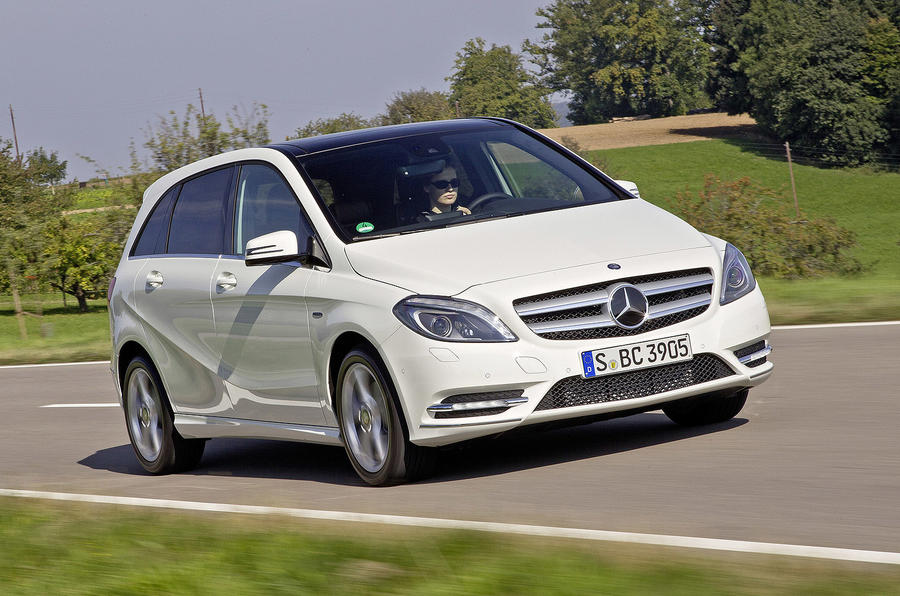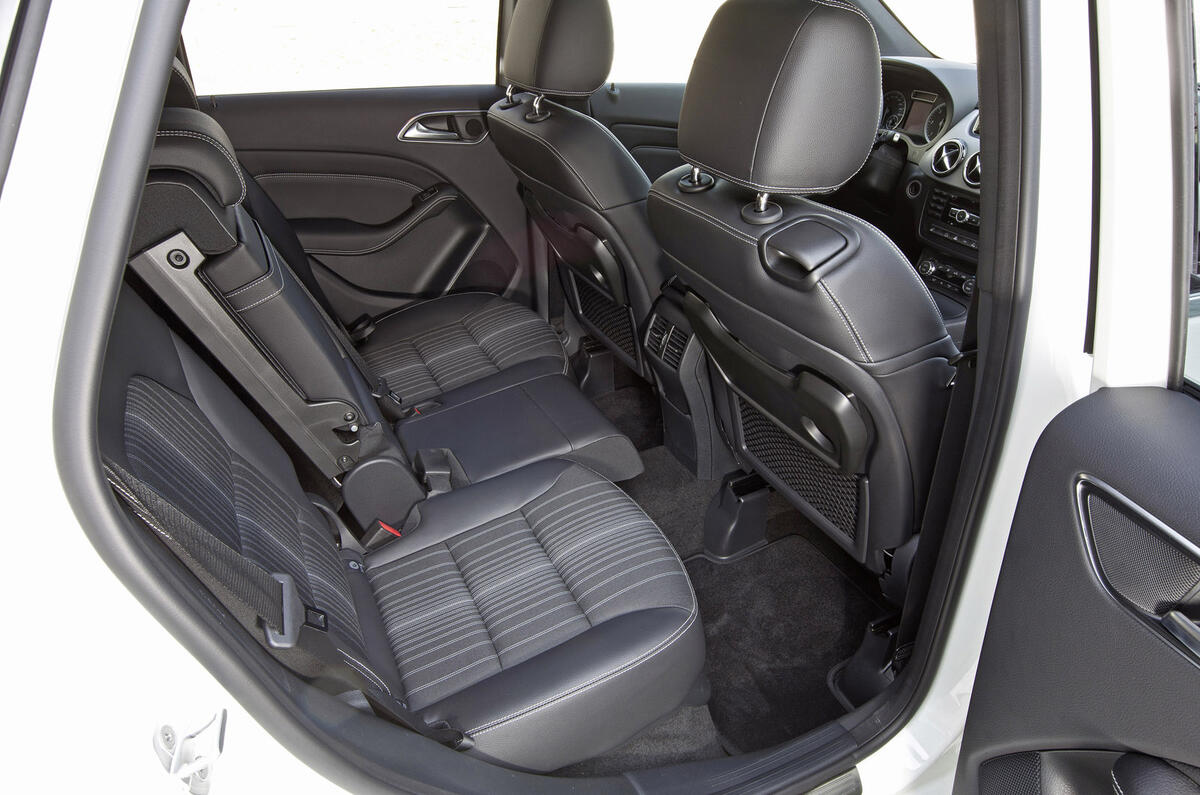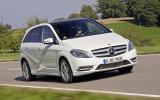What is it?
The new Mercedes-Benz B-class – premium priced rival to the Volkswagen Golf Plus, Ford C-Max, Citroën C4 Picasso, Vauxhall Zafira and other high roof hatchbacks increasingly favoured by family car buyers.
Set to go on sale in the UK in March 2012 at prices Mercedes-Benz officials suggest will be close to those of the old B-class, the second-generation MPV has been thoroughly re-engineered with a new front-wheel drive platform, frugal four-cylinder engines, contemporary gearboxes, heavily revised chassis and an extended range of safety features.
Gone is the heavily hyped sandwich platform that underpinned the first-generation B-class and imbued it with a predominately flat floor – something Mercedes-Benz now admits was terrific for structural rigidity but compromised interior packaging. It is replaced by a more conventional – and cheaper to produce – structure with conventional footwells in a move that provides the new model with added volume within the interior.
Under the bonnet is a new range of transversely mounted petrol and diesel engines. They’re mounted out front rather than under the front section of the floor, as was the case before. Together with the 136bhp turbocharged 1.8-litre common rail diesel in the B 200 CDI tested here, there’s also a less powerful 107bhp version of what is essentially the same engine but with lower boost pressure in the B 180 CDI. Also planned from the start of UK sales is a turbocharged 1.6-litre direct injection petrol unit that produces 120bhp in the B180 and, with added boost, 154bhp in the B 200.
The new engines come mated to a standard six-speed manual gearbox. Buyers can also specify an optional six-speed double clutch transmission. Offering both manual and automatic modes, it replaces the unloved continuously variable transmission.
Another crucial change is the chassis. It retains a Macpherson strut front suspension but the rear torsion beam arrangement of old has been replaced by a more contemporary multi-link set-up. The steering also follows the recent trend, eschewing hydraulic-mechanical for electro-mechanical actuation as part of a series of fuel saving measures that also includes automatic stop/start and brake energy recuperation on all new B-class models.
What’s it like?
Great in some areas, disappointing in others. Climb aboard and the first impression is that you now sit in the B-class, not on it. Due to the floor changes, the front seats have been made considerably more upright and the steering wheel less vertical. It means a more relaxed driving position than the oddly sporting set-up of old. Knee height up front is considerably lower than before.
The front seats, which offer greater cushioning and a more substantial construction than the thin backed pews used in the previous B-class, are mounted 86mm lower. It all adds up to a greater level of perceived comfort even before you’ve turned the key.
Performance wise there’s little to distinguish the new B 200 CDI from its predecessor. The new engine feels very similar to the old B 200 CDI unit in terms of overall response, although a new front axle with altered driveshafts now manages to place its power to the road in a tidier fashion.
There’s enough low-end torque to haul you smartly away from the lights and sufficient mid-range punch to allow you to confidently exploit spaces in traffic. The B-class also cruises at typical motorway speeds without any undue mechanical harshness. In fact, overall refinement levels are now very impressive.

























Join the debate
Add your comment
Re: Mercedes-Benz B200 CDI
The look : -1
Re: Mercedes-Benz B200 CDI
It's lost the interesting package that it used to have. I had a poke around one in Frankfurt, nicely-built but soooo old-fashioned and upright inside. Perfect for the taxi from Koln Flughafen!
Funnily enough on M-B's stand at the motor-show they had one already decked out as a taxi - in that gorgeous beige colour they use in Germany.
Re: Mercedes-Benz B200 CDI
I never understand why people want to pigeonhole a car into a certain group classification be it mpv/sports/etc.
My previous car was a Xsara Picasso yet I live alone. I chose it for its height giving a good view out over hedges and other vehicles roofs, also height provides easy entry and exit great for old codgers like me. For those needing to load small children into child seats a tall car seat makes this so much easier than an estate and the kids get a good view out through the huge windows. Thank goodness the car industry provides us motorists with such a variety of cars to choose from.